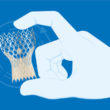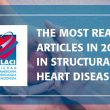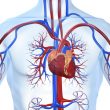At present, an important group of patients with mitral valve disease are at high surgical risk, especially those with deteriorated bio-prosthesis, severe mitral annulus calcification or those who had received mitral annuloplasty. Percutaneous treatment with balloon expandable valves is a valid option to treat these patients, seeing as their 30 day and one-year outcomes look...
Severe Mitral Regurgitation and Cardiogenic Shock: Is Edge-to-Edge a Valid Strategy?
At present, cardiogenic shock continues to present high mortality despite the new treatments and ventricular assistance devices available in some centers. In this group, the presence of severe mitral regurgitation (MR) is around 5% and, on many occasions, it cannot be treated with surgery because of hemodynamic conditions. Edge-to-edge repair has been looked at by...
Edge-to-Edge Repair Reduces Hospitalization and Mortality Rates in Secondary Mitral Valve Regurgitation?
Severe secondary mitral valve regurgitation is associated to hospitalization and mortality. The COAPT study has shown the superiority of guideline directed medical therapy at maximal tolerated doses according to guidelines (GDMT) plus edge-to-edge transcatheter repair (TEER) versus GMDT alone. However, at present there is no information on the impact of hospitalizations and their relationship to...
The Most Relevant of 2021 In Structural Heart Disease
This last year, new data in structural heart disease gave way to changes in practices and new hypotheses, when not simply further justified the already existing evidence. In this new editorial section, we share the most relevant of last year’s works to keep you up to speed on the main topics in the field. The...
The Most Read Articles of 2021: Structural Heart Disease
A new year is coming to an end and at SOLACI we are going over the most read studies on our website, on a vital topic, peripheral vascular disease. Follow us to keep up to date. The Most Read Articles of 2021: Structural Heart Disease 01- Surgeons’ Claim on Low-Risk Patients with Aortic Stenosis Recent...
Ten Commandments for 2021 Guidelines on Valvular Heart Disease
Since the latest version to the Valvular Heart Disease Guidelines from the European Society of Cardiology, plenty of evidence has been accumulating, finally leading to this updated version. In this regard, below you will find what has been called “10 commandments” that sum up this new document, to keep you in the loop. The incidence...
ESC 2021 | Updated European Society of Cardiology Guidelines for the Management of Valvular Heart Disease
Early intervention in asymptomatic valvular heart disease, age recommendations to decide between TAVR and surgery for aortic stenosis, and a push in favor of transcatheter repair in secondary mitral regurgitation are some of the new modifications to the European Society of Cardiology (ESC) Guidelines for the Management of Valvular Heart Disease. This new document was...
New Valvular Heart Disease Guidelines with Key TAVI and Mitral Regurgitation Updates
Valvular heart disease management guidelines were updated last week by the AHA and the ACC. The last complete version had been published in 2014; therefore many of its recommendations have become obsolete before the latest evidence. The studies that made the FDA approve TAVI for low-risk patients are probably the most important incorporations. They also...
The Most Read Articles in Structural Heart Disease of 2020
In this selection, we summarize for you the most important scientific news of 2020 in the field of structural heart disease. 01- Virtual ACC 2020 | COAPT: Better Quality of Life Translates into Harder End-Points After transcatheter mitral valve repair with MitraClip, the COAPT patients saw improved quality of life, better survival rate and fewer hospitalizations...
The Ten Commandments in Adult Congenital Heart Disease
Adult congenital heart disease is a life-long condition that requires appropriate follow-up by experts. Said follow-up is paramount to diagnosing specific and highly variable complications in a timely manner. The recently published European Society of Cardiology guidelines for the management of congenital heart disease calls for a summary of its most important aspects as “ten...








